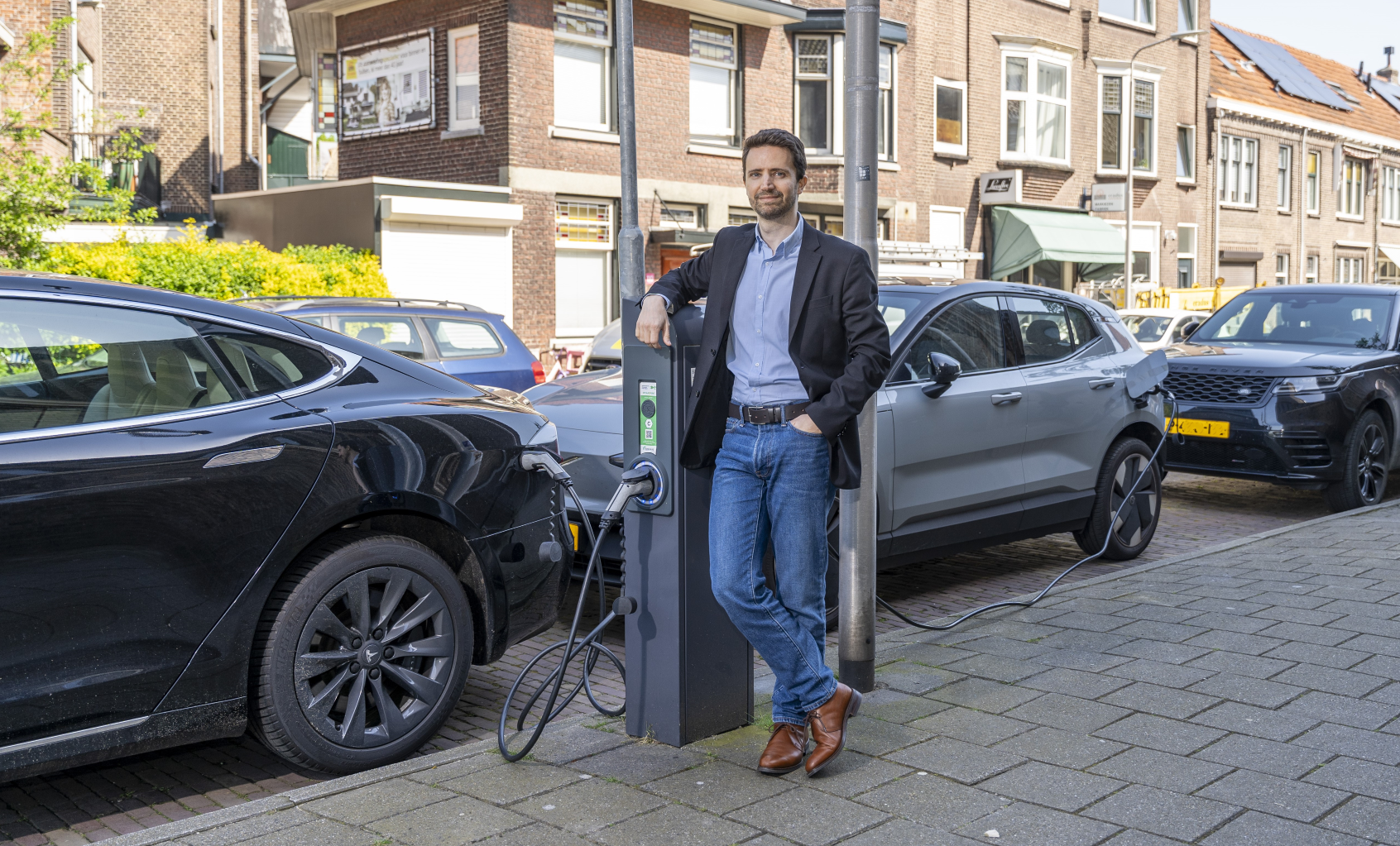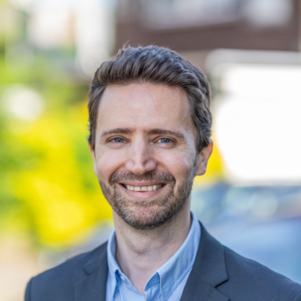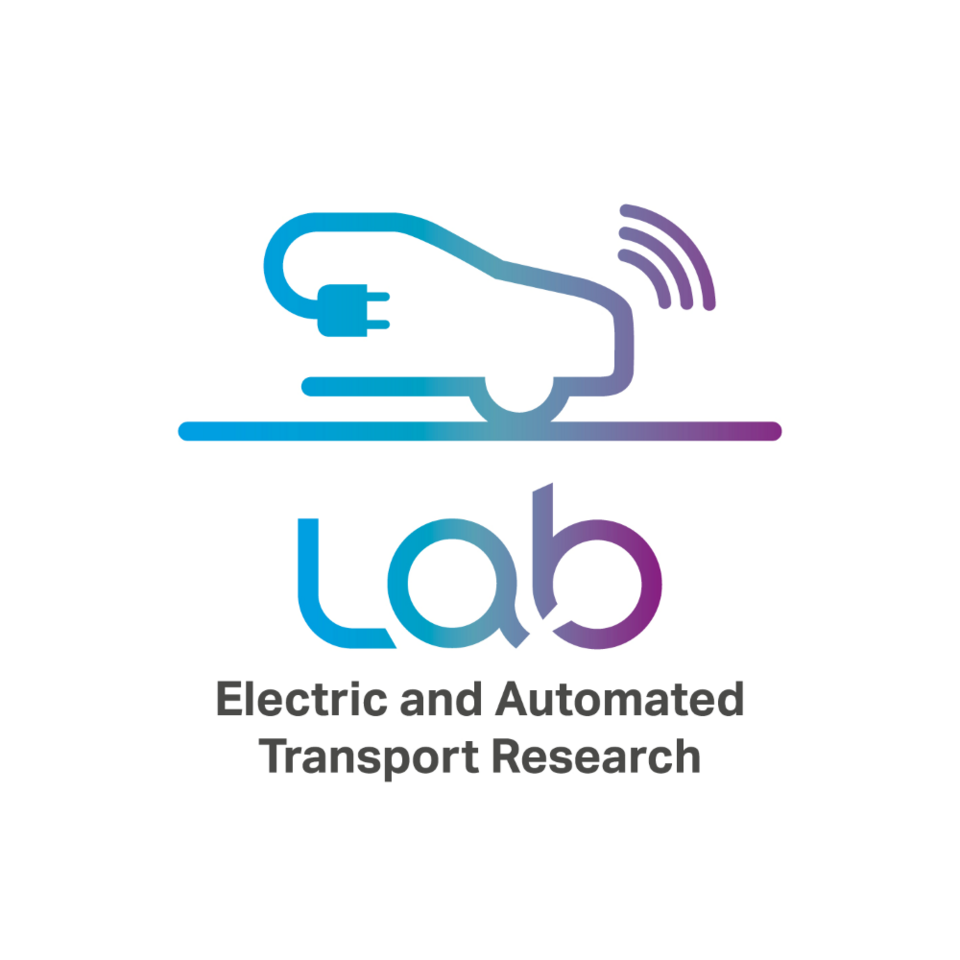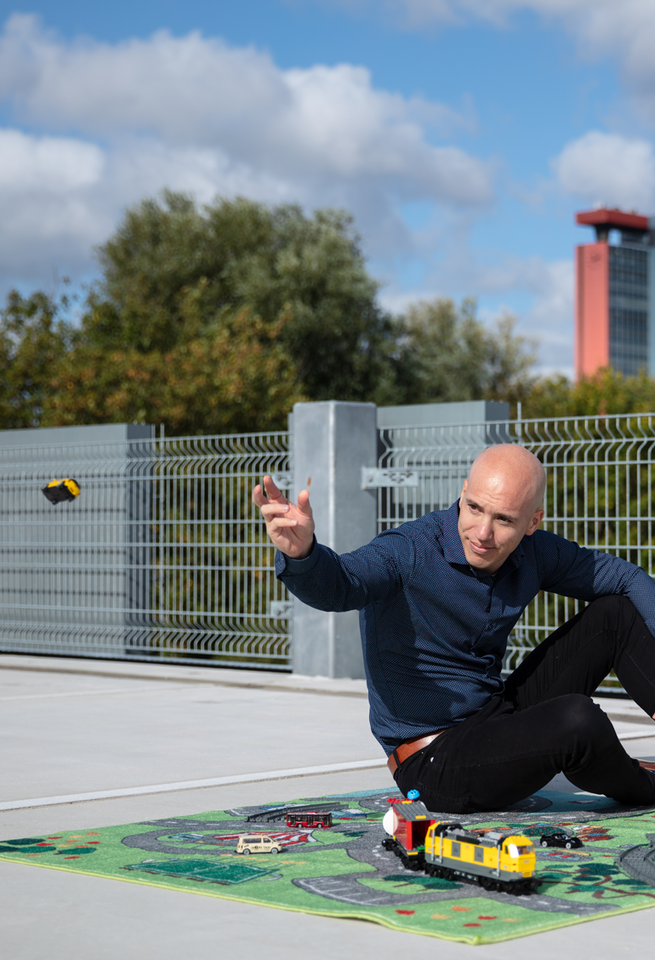At the moment, charging stations are only used to top up the battery of electric cars. But what if, at some future date, they could also be used to feed electricity back to the grid? Buffering power locally in the cars when the power grid is congested would greatly help power providers. Gonçalo Correia, Associate Professor of Transport & Planning, is finding out what it would take to make people use an electric car and participate in the scheme, especially those with lower incomes.
People who have an electric car will recognise the fear of not having enough juice to make it to their destination. Range anxiety is one of the challenges facing the development of the so-called Vehicle-to-Grid (V2G) technologies.
“If you are feeding back electricity to the grid you may not have a full battery when you start traveling. Are people prepared to accept this? How confident are you that you won’t be stuck mid-journey if you are at 40, 60, or 80 percent of the battery capacity? For a person who spends a lot of time on the road for work, the percentage will be different than for someone who only uses their car for short trips,” says Correia.
The car as a battery
Vehicle-to-Grid, or returning electricity to the network, is a relatively new possibility. Correia: “We’re familiar with the reverse principle of taking electricity from the grid but by adding bidirectional charging as a feature the car effectively becomes an external battery for temporarily storing power. This may help with the power grid congestion problems that some providers are facing, notably in the Netherlands. With V2G you can arrange it so your car will be charged at peak availability and return electricity when demand is high. This buffering capacity allows better capturing of intermittent power generation such as solar and wind, while also contributing to shaving the peak consumption, when gas-fired power plants are often being cranked up to produce extra power.”
Impact on climate
Correia aims at making the mobility sector more sustainable and achieving climate goals. “It is fun and important to strive for technological efficiency or improve mathematical models but there has to be something extra. I worry about the future of our planet. By linking electric mobility to the challenges of an overloaded grid and the energy transition, my research can have impact.”
A person is not going to muck up their daily schedule to connect their car to the charging stations at the most advantageous time.
The social side of V2G
V2G is not just a matter of a couple of technical tweaks to a car and some extra charging stations, Correia emphasises. To make it work you need to gauge potential users' needs and habits. “What would it take for them to return electricity to the grid? Apart from range anxiety, price is important too. How much would it take to make it worth their while? A person is not going to muck up their daily schedule to connect their car to the charging stations at the most advantageous time for little return.”
Neighbourhoods with few electric vehicles
This is one of the social aspects of V2G Correia will be investigating in the project V2G-quests (see box). The focus of the project is not on places which already accommodate a fair number of electric cars but on locations where electric cars are not a common feature, such as in the less affluent neighbourhoods. “Net congestion is not a problem of just a few districts in the Netherlands. It is much more widespread than that. If you want to solve it you have to make V2G widely accessible. We also hope to make driving electric cars more inclusive,” explains Correia. If there is a financial reward for feeding power back to the grid, it becomes cheaper to use an electric car. “Not just by promoting individual use but by fostering shared electric mobility as well”.
Charting behaviour and needs
V2G-Quests consists of three pilot projects, including one in the Utrecht district of Kanaleneiland. Correia: “We are talking to the locals, with the expertise of our research partners, about what is stopping them from buying or using an electric car and what would make them change their mind. We also want to get a clearer picture of what their day looks like, when and why they use their car and where they are parking it. So, what we do is gauge what would motivate people to participate in V2G. The data we gather will be used to improve behavioural models. And by combining them with optimisation models, we can devise strategies and road maps for these districts to maximize the potential of V2G and make a positive effect on sustainability.”
From model to application
The optimisation and behaviour models created in the project will help generate insights to help policymakers fostering V2G and making it accessible. “That includes looking at rules and regulations. It is currently not fully allowed to return electricity from the car to the grid in every country, for instance. We can also use the models as a service to companies and therefore to the users. In V2G-Quests we were recently joined by a company that develops software based on the personal V2G needs of the users. Via this tool, you can indicate how much electricity your car can feed back into the grid and at what time your car can be discharged. Personalised recommendations make things easier for the user and, hopefully, that will lower the threshold”, Correia says.
A dream for the future
Although most cars still have internal combustion engines, Correia believes his dream of a completely green mobility system will come true in the not-too-distant future. It is already well on its way in Shanghai, he found on a visit to the city. “Everywhere I looked I saw electric vehicles, from lightweight ones to lorries. The lack of engine noise was wonderful. Urban clean air is one of the major advantages and electric mobility is therefore a great boost to health. China still needs to grow its renewable energy production but it has an advantage over us in that they have no serious grid congestion problems. So, before we can have the same experience in the Netherlands, we definitely have to look into the grid-congestion problem.”
Research project V2G-Quests
V2G-Quests is a joint project in which more than 20 European partners are working together. TU Delft, which leads the project, is one of many universities, businesses and public authorities involved, including Dutch partners Erasmus University, Hogeschool Arnhem Nijmegen (HAN), Utrecht Municipality and power utility company Stedin. The project is funded by NWO and is part of the first call of the DUT (Driving Urban Transitions) partnership, which is an European effort to accelerate sustainability in our cities. Find out more about the project here.






